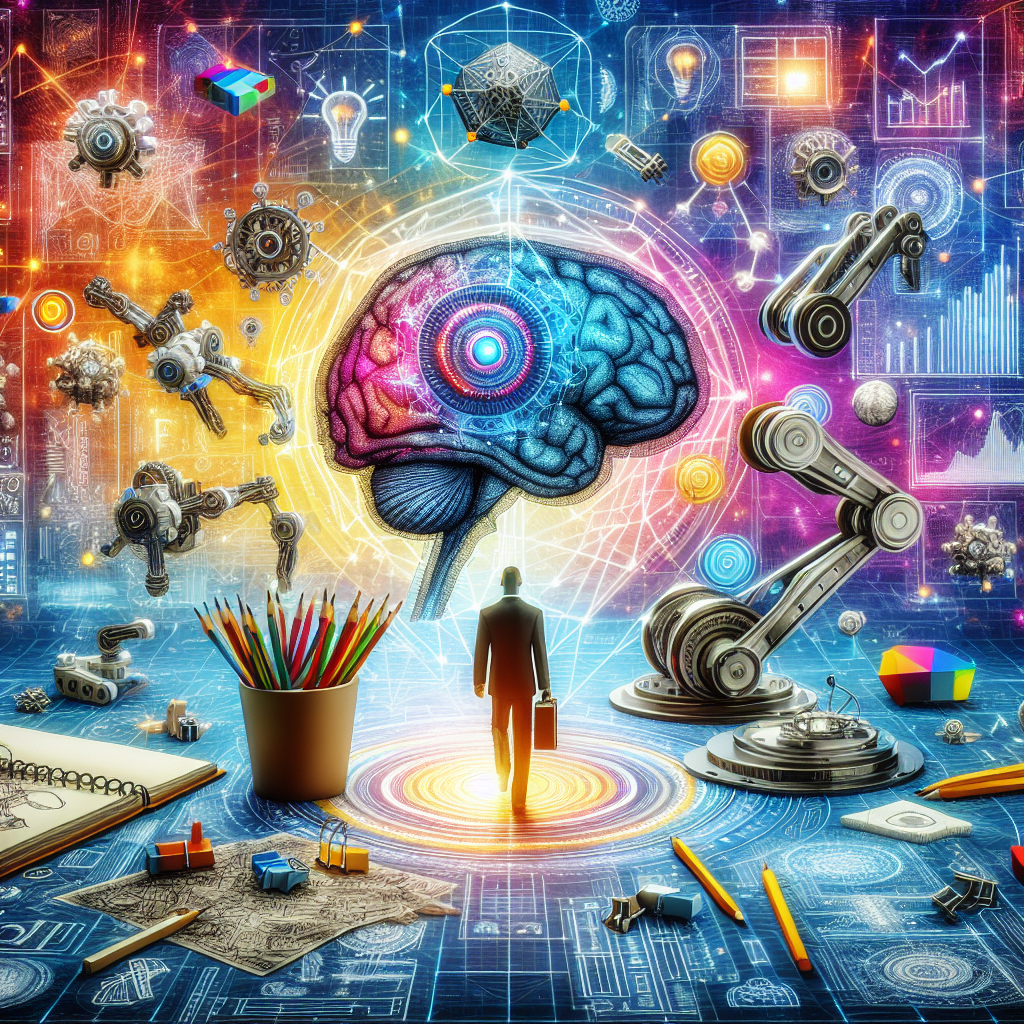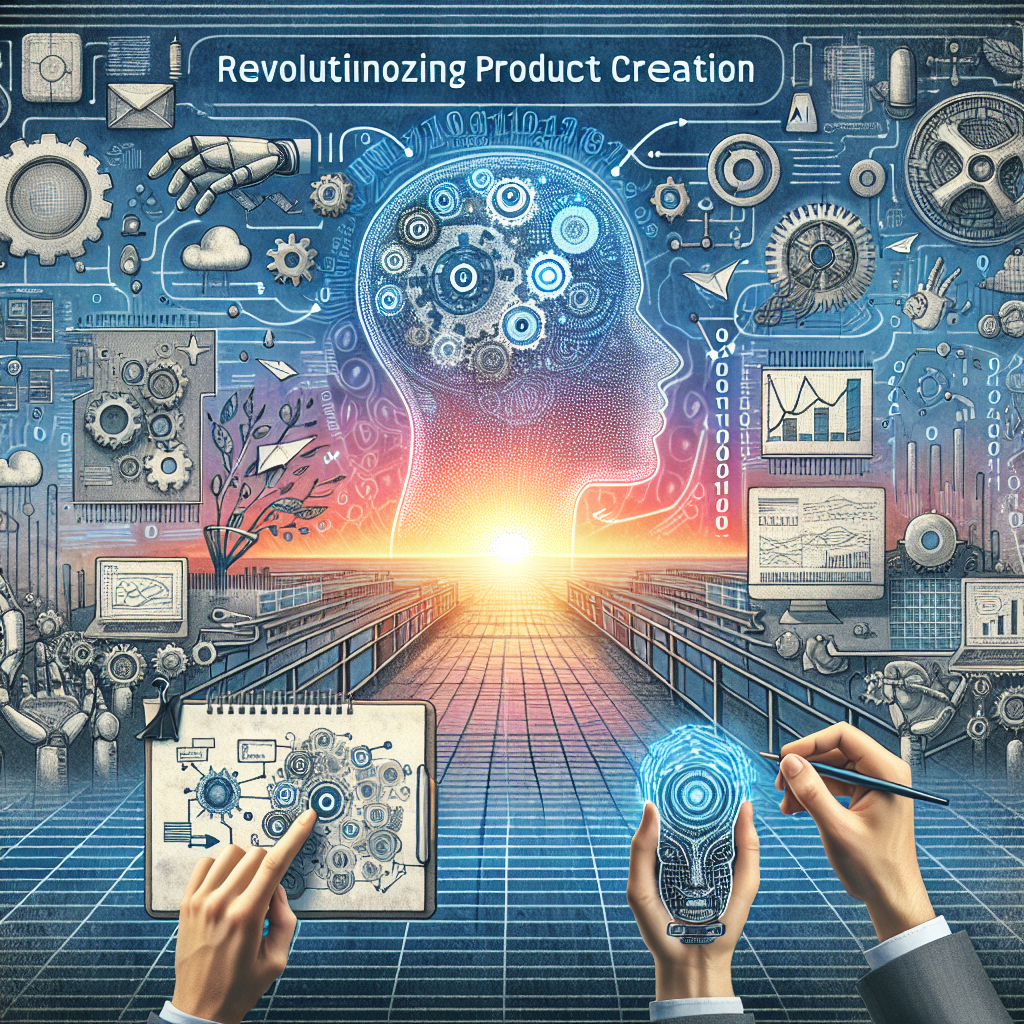A Beginners 7-Step Guide To A.I. Enhanced Product Creation. Imagine you’re a beginner, eager to dive into the world of A.I.-enhanced product creation. You may feel overwhelmed by the complexity of it all, unsure of where to start and how to navigate this new realm. But fear not! This article will serve as your empathic guide, providing you with a 7-step roadmap to help you embark on a successful journey into A.I.-enhanced product creation. From understanding the fundamentals of A.I. to harnessing its power in the creation process, you’ll gain the knowledge and confidence needed to unlock the immense potential of this transformative technology. So, let’s embark on this enlightening journey together, shall we?
Step 3: Gathering Data
Step 1: Understanding A.I.-Enhanced Product Creation
What is A.I.-Enhanced Product Creation?
A.I.-Enhanced Product Creation refers to the process of utilizing artificial intelligence technologies to optimize and streamline the development of new products. It involves leveraging machine learning algorithms, data analysis, and automation to identify market trends, gather insights, and generate innovative ideas for product development.
Why is A.I.-Enhanced Product Creation Important?
A.I.-Enhanced Product Creation is important because it allows businesses to harness the power of artificial intelligence to drive innovation and stay competitive in today’s dynamic market landscape. By leveraging A.I., companies can expedite product development cycles, enhance product performance, and make data-driven decisions. This approach can lead to improved customer satisfaction, higher efficiency, and increased profitability.
Step 2: Defining Product Goals
Identify Target Market
In order to successfully create a product, it is crucial to identify the target market. This involves conducting market research and analyzing customer preferences, needs, and pain points. By understanding the target market, businesses can design products that cater to specific customer segments, ensuring better relevance and higher chances of success.
Determine Product Objectives
Once the target market is identified, it is essential to define clear product objectives. These objectives should include key factors such as product features, functionality, and uniqueness. By setting specific goals, businesses can align their product development efforts with the needs and expectations of the target market, increasing the likelihood of achieving success.
Set Performance Metrics
To effectively measure the success and performance of the product, it is important to establish performance metrics. These metrics could include factors such as customer satisfaction, sales volume, market share, or return on investment. By setting measurable benchmarks, businesses can track the progress of product development and make informed decisions based on real-time data.

Primary Data Collection
To gather relevant data for A.I.-enhanced product creation, businesses can employ various methods such as surveys, interviews, or focus groups. Primary data collection allows companies to directly engage with their target market and obtain firsthand insights on customer preferences, opinions, and behaviors. This data can then be utilized to train A.I. models and generate valuable insights for product development.
Secondary Data Collection
In addition to primary data collection, secondary data can also be collected from existing sources such as market reports, industry publications, or public databases. This data can provide businesses with valuable industry trends, competitor analysis, and historical market data. By combining primary and secondary data, companies can gain a comprehensive understanding of the market landscape and make informed decisions for product development.
Step 4: Preparing Data for A.I. Analysis
Data Cleaning
Before leveraging A.I. algorithms for analysis, it is crucial to clean the collected data. Data cleaning involves removing any inconsistencies, errors, or outliers from the dataset to ensure accurate and reliable results. This process may include tasks such as removing duplicates, handling missing values, or standardizing data formats.
Data Formatting
Once the data is cleaned, it needs to be formatted in a way that is compatible with A.I. algorithms. This involves transforming the data into a structured format, such as a spreadsheet or a relational database. By ensuring consistent formatting, businesses can effectively analyze the data and derive meaningful insights.
Data Labeling
For certain A.I. tasks, data labeling is required. This involves manually assigning labels or tags to the data to facilitate supervised learning algorithms. For example, if the objective is to classify customer feedback as positive or negative, the data needs to be labeled accordingly. Through data labeling, businesses can train A.I. models to accurately process and interpret the data.

Step 5: Choosing the Right A.I. Models
Supervised Learning
Supervised learning is a popular A.I. technique used for various product creation tasks, such as sentiment analysis, image recognition, or demand forecasting. In supervised learning, A.I. models are trained on labeled data to make predictions or classifications. This approach requires a training dataset with known outcomes, which helps the model learn and generalize patterns to make accurate predictions on unseen data.
Unsupervised Learning
Unsupervised learning is another A.I. technique commonly used in product creation. Unlike supervised learning, unsupervised learning algorithms analyze unlabeled data to discover patterns or relationships. This approach is useful for tasks such as market segmentation, anomaly detection, or recommendation systems. Unsupervised learning allows businesses to uncover hidden patterns and gain insights without the need for pre-labeled data.
Reinforcement Learning
Reinforcement learning involves training A.I. models through a feedback loop system. The models learn by interacting with an environment and receiving rewards or penalties based on their actions. This approach is commonly used in tasks that require decision-making in dynamic or complex environments. In the context of product creation, reinforcement learning can be used to optimize product designs, pricing strategies, or personalized recommendations.
Step 6: Training and Testing
Data Splitting
Before training a model, the collected data needs to be split into a training dataset and a testing dataset. The training dataset is used to train the model, while the testing dataset is used to evaluate its performance. This ensures that the model is unbiased and can accurately generalize to unseen data. Typically, a standard split of 70% for training and 30% for testing is used, but this can vary depending on the specific requirements of the project.
Model Training
Once the data is split, the A.I. model can be trained using the training dataset. This involves feeding the model with the input data and the corresponding output labels (in the case of supervised learning). The model learns from the input-output patterns and adjusts its internal parameters to optimize its predictions. The training process typically involves multiple iterations and is driven by optimization algorithms.
Model Evaluation
After the model is trained, it needs to be evaluated using the testing dataset to assess its performance. Various evaluation metrics can be used, depending on the task at hand. For example, accuracy, precision, recall, or F1-score can be used for classification tasks, while mean squared error or R-squared can be used for regression tasks. This evaluation process helps identify any shortcomings or areas for improvement in the model.
Step 7: Implementing A.I.-Enhanced Product Creation
Putting A.I. Insights into Action
Once the A.I. model is trained and evaluated, the insights gained from the analysis can be put into action. These insights can be used to inform decision-making processes in product development, marketing strategies, or customer experience improvements. By leveraging A.I. insights, businesses can make data-driven decisions that are more likely to resonate with the target market and lead to successful product creation.
Iterative Development
Product development is an iterative process, and A.I.-enhanced product creation is no exception. It is important to continuously gather feedback, analyze data, and refine the models to improve product performance. This iterative approach allows businesses to adapt to changing market trends, customer preferences, and technological advancements, ensuring that the product stays relevant and competitive.
Monitoring and Optimization
Once the product is launched, it is crucial to monitor its performance and gather feedback from users. By leveraging A.I. technologies, businesses can collect user data, analyze usage patterns, and identify areas for optimization. This continuous monitoring allows companies to iterate and improve the product based on real-time insights, ultimately leading to enhanced customer satisfaction and increased sales.
Additional Tips and Resources
Latest Trends in A.I.
Staying up to date with the latest trends in A.I. is crucial for businesses aiming to enhance their product creation process. Some of the current trends include the emergence of transformer models for natural language processing, advances in computer vision technologies, and the growing popularity of deep reinforcement learning. By keeping track of these trends, businesses can stay ahead of the curve and leverage cutting-edge A.I. techniques in their product creation journey.
Useful Tools and Technologies
There are several tools and technologies available that can aid in A.I.-enhanced product creation. Frameworks such as TensorFlow and PyTorch provide a robust infrastructure for developing and deploying A.I. models. Data visualization tools like Tableau or Power BI can help present insights in a visually appealing manner. Cloud platforms like AWS or Google Cloud offer scalable and cost-effective solutions for data storage and model deployment. These tools and technologies can streamline the A.I. implementation process and enhance productivity.
Online Courses and Training
For those interested in diving deeper into A.I.-enhanced product creation, there are various online courses and training programs available. Platforms like Coursera, Udacity, or edX offer comprehensive courses on machine learning, deep learning, and A.I. application development. These courses provide hands-on experience, practical knowledge, and industry best practices, enabling individuals to acquire the necessary skills to implement A.I. technologies in their product creation processes.
Potential Challenges
Data Privacy and Security
One of the key challenges in A.I.-enhanced product creation revolves around data privacy and security. Collecting and analyzing sensitive customer data requires businesses to comply with relevant data protection regulations and implement robust security measures. It is crucial to ensure that data is anonymized, encrypted, and stored securely to protect customer privacy and prevent unauthorized access or breaches.
Ethical Considerations
Another challenge is ethical considerations when utilizing A.I. technologies. Businesses must ensure that their A.I. systems are fair, transparent, and unbiased. The models should not discriminate or perpetuate existing biases in the data. Additionally, it is important to use A.I. technologies responsibly and ethically, taking into account the potential impact on society, including areas such as employment, privacy, and human rights.
Conclusion A Beginners 7-Step Guide To A.I. Enhanced Product Creation
Key Takeaways
A.I.-Enhanced Product Creation offers businesses a powerful toolkit to drive innovation and optimize product development processes. By following a structured 7-step guide, businesses can leverage A.I. technologies to gather insights, make data-driven decisions, and create products that align with customer needs and market trends. It is important to understand the target market, define clear objectives, gather relevant data, choose appropriate A.I. models, and iterate through an iterative development process.
Future Outlook
The future of A.I.-Enhanced Product Creation holds immense potential. As A.I. technologies continue to advance, businesses will have access to more sophisticated algorithms, larger datasets, and enhanced computing power. This will enable them to unlock deeper insights, optimize product performance, and deliver personalized experiences to customers. However, it is crucial to remember that while A.I. can greatly enhance the product creation process, human creativity and expertise remain integral to success. By combining the power of A.I. with human ingenuity, businesses can truly drive innovation and create products that resonate with the ever-evolving market.
